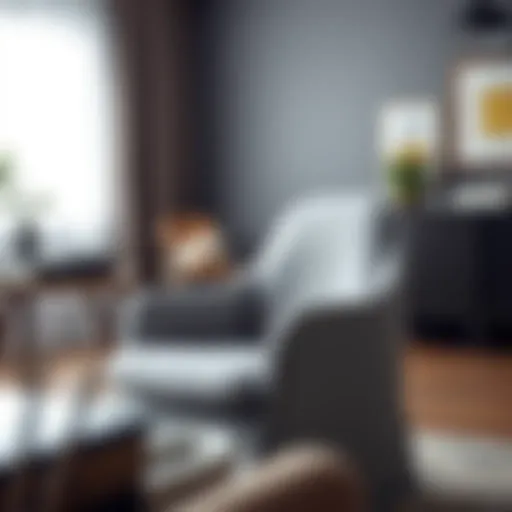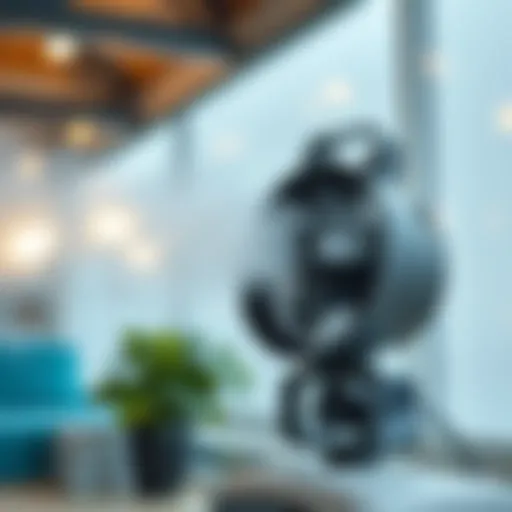Shoe Shelving Units: A Deep Dive into Design and Functionality
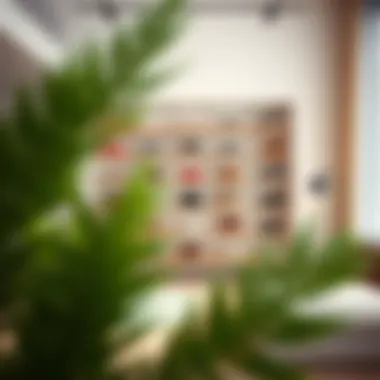

Intro
In the world of interior design, the little things often make a big difference. Among them, shoe shelving units are a perfect example. These storage solutions aren’t just functional; they can be a powerful ally in elevating both utility and aesthetic in a space. This exploration aims to unearth the intricate relationship between shoe shelving, design choices, and personal expression.
As fashion enthusiasts and interior aficionados, one might find themselves steering through an array of options—from sleek, minimalist structures that hug the walls to flamboyant, multi-tiered towers that become focal points of a room. What’s more, selecting the right material can transform a mundane shoe rack into an eye-catching piece of furniture.
In the following sections, we will navigate through fashion trends, style tips, and practical advice for maximizing organization and visual appeal in your shoe storage solutions. Each element, from shape and color to functionality and style, will be dissected to give you a well-rounded understanding of how shoe shelving units can not only keep your space organized but also elevate your home’s overall style.
Let's step inside this stylish realm and see how the simplest of units can reflect complex personalities and tastes.
Understanding Shoe Shelving Units
Shoe shelving units are more than just an organizational tool; they play a crucial role in managing space and keeping footwear accessible. In today’s fast-paced world, where every square inch of living area counts, these units provide practical solutions tailored to varied needs. Whether you’re a fashion aficionado with an extensive collection or someone who simply wants to corral a few pairs, the right shelving unit can make all the difference. They are not merely furniture; they are custodians of our valuable footwear.
Definition and Purpose
A shoe shelving unit is designed to hold multiple pairs of shoes in a way that's both functional and visually appealing. The primary purpose is clear: to store shoes systematically, ensuring that they are easy to access and care for. For instance, a unit that allows for air circulation can help maintain shoe quality by preventing moisture buildup, which can lead to odor and deterioration.
Think of it this way: your shoes are like your best friends. When they’re well looked after, they’ll be there for you in style whenever you need them. Proper shelving helps to extend the lifespan of these companions while contributing to a more streamlined and organized living space.
History and Evolution
The concept of shoe storage dates back centuries, often reflecting cultural preferences and practical needs. Early forms of shoe storage were rudimentary, perhaps just a wooden box by the door. Fast forward to the 20th century, and technology began to adapt materials and designs to fit the changing lives of people. With the rise of consumerism post-World War II, the need for dedicated space to store footwear became apparent.
In the 1980s and 1990s, as shoe styles became more varied and individualistic, shelving units evolved into a form of self-expression. By incorporating aesthetics into their function, designers began to create versatile shoe racks that could blend seamlessly into home decor. Today, you can find everything from minimalist, sleek designs in urban lofts to intricately crafted wooden shelving in cozy suburban homes.
"Understanding the evolution of shoe shelving units helps to appreciate their role in modern design and functionality."
As we leap into the 21st century, advances in technology have opened up new possibilities, such as modular shelving that allows for customization and adaptability in any space. Now, humans are not just storing shoes but are elevating them to a position of prominence in home design, showcasing their collection much like a gallery.
In essence, understanding shoe shelving units encompasses more than just their physical structure; it involves acknowledging their practical benefits and historical context. Whether you are looking for a tidy solution to your shoe clutter or a stylish display for your prized possessions, comprehending their definition and evolution will set the stage for making informed choices down the line.
Types of Shoe Shelving Units
When it comes to organizing footwear, understanding the different types of shoe shelving units is crucial. Each type offers unique benefits, catering to various needs and space constraints. Whether you're a fashion enthusiast looking to showcase your prized collection or someone simply trying to declutter your closet, knowing your options can make all the difference. The right choice can enhance not just the aesthetic appeal of a space, but also improve functionality and convenience. Here’s a closer look at three prominent types of shoe shelving units that could meet your individual requirements.
Wall-Mounted Units
Wall-mounted shoe shelving units provide an elegant and often sophisticated way to display shoes without consuming floor space. These units can serve as a striking focal point in an entryway or a stylish addition to a bedroom. The key advantage is that they utilize vertical space, making them ideal for smaller homes or apartments where every inch counts.
- Space-saving design: Perfect for tight spaces, they direct the eye vertically and avoid cluttering the floor.
- Customizable: Many wall-mounted designs allow for personal adjustments, letting you decide heights and arrangements based on your shoe collection.
- Aesthetic versatility: Available in various styles, from sleek, modern metal racks to intricate wooden designs, they can easily blend with the decor of any room.
However, it’s worth noting that installation requires careful measuring and possibly drilling into walls, which might intimidate some users. Ensuring that the wall can support the weight of the shoes along with the unit without sagging is also vital.
Freestanding Shelves
Freestanding shelves bridge the gap between style and practicality. These units stand independently on the floor and offer ample storage while being fairly easy to set up and rearrange if needed. They can be found in various materials, finishes, and sizes, allowing buyers to pick a unit that matches their style and storage needs.
- Flexibility: Freestanding shelves can be moved around easily, making them perfect for those who frequently redecorate or need different arrangements.
- Open design: This allows for quick access to your collection, perfect for those who like to choose footwear on-the-go.
- Variety: With options from simple wooden racks to elaborate multi-tiered designs, there's something for every taste and budget.
Despite their many advantages, it's important to select a unit that has a sturdy build to hold various types of shoes, especially heavier ones like boots.
Portable Shelves
Portable shelves cater to those who value mobility. This type of shoe shelving unit is designed for use in different locations, whether it be at home, a retail store, or temporary setups like events. They can often be folded or collapsed for easy transport, providing one of the most flexible storage solutions available.
- Convenience: Perfect for events, travel, or simply rearranging spaces without hassle.
- Lightweight and adaptable: Many come with wheels for easy mobility, allowing users to move them with ease.
- Quick assembly: Most portable shelves can be set up in minutes, making them user-friendly even for those with little experience.
On the downside, while portable shelves tend to be lightweight, this can also mean they're less stable than their wall-mounted or freestanding counterparts. Caution should be exercised to avoid overloading them.
In summary, choosing the right type of shoe shelving unit depends largely on personal needs, available space, and aesthetic preferences. By understanding the unique features of wall-mounted, freestanding, and portable options, individuals can make informed choices that not only enhance organization but also complement their living space.
Design Considerations
When it comes to selecting and implementing shoe shelving units, several design considerations play a pivotal role in transforming a mere storage solution into an integral part of an interior space. It's not just about cramming in as many pairs of shoes as possible; the overall design can greatly influence how a room feels and functions. Factors like aesthetic appeal, functionality and accessibility, and space efficiency must be taken into account. Understanding these elements will not only enhance the utility of a shoe shelving unit but also elevate the look of a home.
Aesthetic Appeal
A shoe shelving unit should align with the broader decor of your space. The visual impact of these units can eagerly complement or clash with existing elements in your home. When considering aesthetic appeal, one should think about the color, shape, and material of the shelving.
- Colors and finishes can create a harmonious look. A sleek, black metal frame may look utterly chic in a modern loft, while a rustic wooden unit can add warmth to a country-style home.
- Shapes and styles should also complement your space. For instance, if your home leans towards minimalism, opt for units with clean lines and fewer embellishments. Conversely, if you aim for a more eclectic vibe, consider mixing colors, textures, and styles.
- Personalization can elevate your shelving from ordinary to extraordinary. Adding lights or decorative elements on or within the shelving can turn functional storage into a conversation starter.
Choosing a shoe shelf that echoes your style contributes not just to organization, but to the overall aesthetic elegance.
Functionality and Accessibility
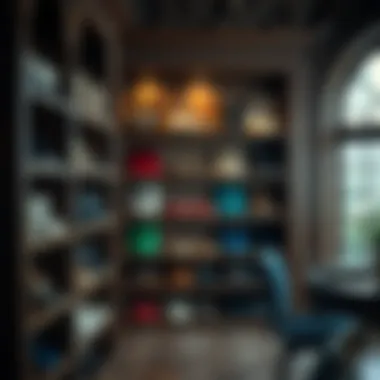
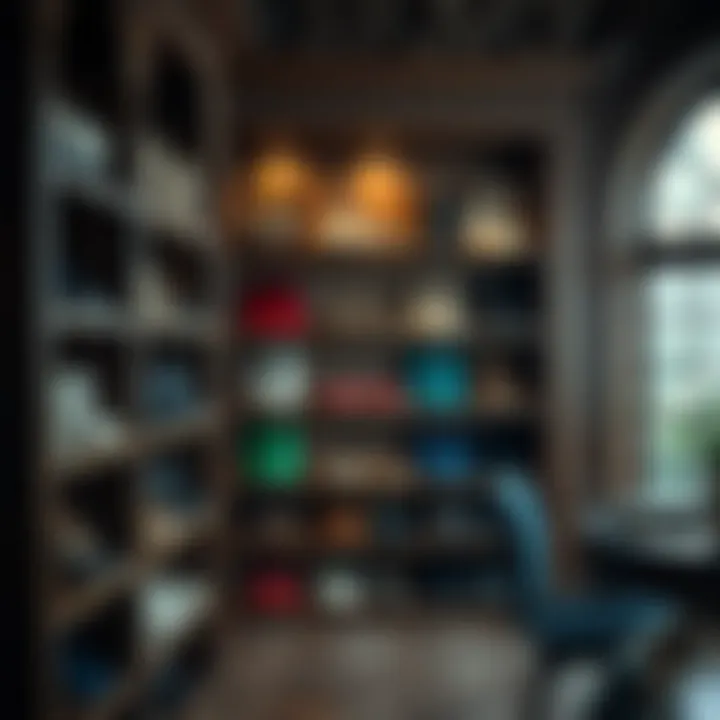
No one wants to fumble around searching for the right shoe, nor do they want to endure the frustration of a poorly designed shelving unit. Functionality is about ensuring the storage solution is practical and accessible. Here's what to consider:
- Ease of access: Shelves should be at a height that allows you to reach your shoes without a hassle. Sometimes low units work best for children’s shoes, while taller designs may favor adult footwear.
- Adjustable shelving can offer increased versatility. If your collection includes varying types, such as high-tops, sandals, and boots, being able to shift shelves based on height can prevent clutter.
- Compartmentalization can further ease accessibility. Having dedicated space for different types of shoes, maybe even labeled spaces, makes finding that elusive pair easier.
All in all, functionality and accessibility go hand in hand. You should be able to see your collection at a glance, without turning your home into a scavenger hunt.
Space Efficiency
With urban living, space often comes at a premium. Here, space efficiency is key. The aim is to maximize storage without overwhelming the environment.
- Vertical designs can help in utilizing wall space. Instead of allowing walls to stand bare, transform them with tall shelving units that draw the eye upward.
- Multi-purpose shelves: Consider designs that offer more than just shoe storage. Some units can have compartments for bags or even a bench on top for a quick change before heading out.
- Corner units can also take advantage of often-overlooked areas. Building into angular spaces can create additional storage without cramping the central area of a room.
Ultimately, maximizing space efficiency contributes too not only to the organization of shoes but also to the overall flow and functionality of your living space.
The right design considerations can elevate a shoe shelving unit from a simple storage option to an essential component that enhances the livability of your home.
Materials for Shoe Shelving Units
When it comes to shoe shelving units, the materials used play a crucial role. They not only dictate the longevity and durability of the unit but also influence its aesthetic appeal and functionality in our everyday lives. Choosing the right material can enhance the overall experience of organizing and displaying footwear. Below we'll explore the primary material options available, discussing their benefits, considerations, and how they can meet various storage needs.
Wood Options
Wood remains one of the most popular materials for shoe shelving units, thanks to its classic appeal and versatility. Solid wood, engineered wood, or even plywood can be crafted into attractive and sturdy shelving units. Here are a few essential points about using wood:
- Aesthetic Charm: There's an innate warmth that wood lends to a space. From oak to walnut, different finishes can complement various interior designs.
- Strength: High-quality wood can hold considerable weight, making it ideal for heavy shoes or multiple pairs stacked together.
- Customization: Wood is easily customizable. You can paint, stain, or even carve patterns into the units.
- Maintenance: Regular polishing and occasional refinishing are essential, but it’s a small price for such beauty.
However, it’s essential to note that wood can be susceptible to water damage if not treated properly. Keeping it away from humid areas or ensuring it’s sealed can prolong its life significantly.
Metal Structures
Metal shoe shelving units are often regarded as the heavyweights in this arena. Known for their robustness and modern flair, metal options can range from simple wire racks to more elaborate finished units.
- Durability: Metal shelving is less likely to warp or bend compared to wood, providing a reliable option for long-term use.
- Sleek Design: Many modern businesses favor metal shelving due to its clean lines and minimalist look, which fits seamlessly into contemporary decor.
- Resistance to Moisture: Unlike wood, metal structures don’t suffer from issues related to humidity. This makes them perfect for basements or areas prone to moisture.
- Affordability: Generally, metal shelving can be found at a lower price point than solid wood, offering budget-friendly options.
However, metal may lack the visual warmth that wood provides. If you're aiming for a cozy space, you might need to integrate decorative elements or combine it with softer materials for balance.
Plastic and Composite Materials
Plastic and composite materials are often overlooked, but they offer a range of benefits that can be highly advantageous.
- Lightweight: These materials are generally lighter than wood or metal, making them easier to move and rearrange.
- Affordability: Plastic shelves tend to be much cheaper, making them an excellent choice for those on a tight budget.
- Versatile Designs: Available in a variety of colors and styles, plastic shelves can be customized to fit playful child’s rooms or sleek modern settings.
- Resistance to Stains: Unlike wood, plastic doesn’t stain easily and is often easier to clean.
However, keep in mind that while plastic may suit casual use or temporary arrangements, its durability might not match that of wood or metal for heavy-duty storage.
Overall, understanding the materials used in shoe shelving units is essential in making an informed choice. The material dictates not just appearance, but also functionality and longevity, which are crucial elements in maintaining a well-organized and aesthetically pleasing space.
Installation Tips
Installing shoe shelving units effectively is crucial for ensuring that your precious footwear remains organized and accessible. The right installation not only enhances the aesthetic of your space but also maximizes data functionality, lending a seamless blend of style and practicality. This section will provide you with the insights and guidance necesary for a successful setup.
Measuring Your Space
Properly measuring your space is the first step in the installation process. Imagine spending hours picking the perfect shoe shelf, only for it to arrive and not fit where you intended it to. You'll want to carefully consider a few elements:
- Dimensions of the Area: Use a tape measure to figure out the exact width, height, and depth of the space you plan to utilize. Keep in mind any obstacles such as doors or furniture.
- Existing Furniture: Take note of what surrounds the area. This will affect how the shoe shelving unit will fit into the overall design of your space.
- Flooring Type: If you have carpeting, ensure that your shelving unit can sit flat and stable. Sometimes, adjustments may be needed to find solid ground or to prevent any wobbling.
Once you have your measurements, jot them down. It's advisable to create a small sketch or layout of the proposed area which will guide you throughout the installation process.
Choosing the Right Location
Determining the best location for your shoe shelving unit is crucial. Consider the following factors:
- Visibility: Placing the unit in a high-traffic area like a hallway can serve a dual purpose: it displays your collection while keeping them handy.
- Convenience: Choose a spot that is easy to reach when you're about to leave or come home. For instance, having it near your entryway could simplify your daily routine.
- Lighting: Natural light can be a delightful accent to your shoe display, making the colors and designs pop. If possible, position your shelving near windows.
- Climate Control: Think about ventilation and humidity. Shoes made from leather or other sensitive materials are best kept in a climate-controlled area to avoid damage.
These small shifts in positioning can have a significant impact on both aesthetic and functionality.
Step-by-Step Installation Guide
Once you have your space measured and location chosen, now comes the installation. Here’s a straightforward breakdown to guide you through:
- Gather Tools and Supplies: Ensure you have everything on hand. Common tools include a drill, screwdriver, level, and wall anchors if you’re mounting.
- Read Instructions: Always start by reading the manufacturer's assembly guide. This can save you a whole lot of headache.
- Mark Your Wall/Area: Use a pencil to mark where the shelving will go. A level will help you keep it straight, especially if you're mounting the unit to the wall.
- Drill Holes: For wall-mounted units, use a drill to create holes based on your marks. Be cautious and check that you aren't drilling into pipes or wiring.
- Install the Unit: Follow the assembly instructions meticulously. Ensure to secure the unit firmly, addressing any safety concerns.
- Final Touches: Utilize shims if necessary to level the unit entirely. Then, style it with your shoes and keep your space impeccable.
By adhering to this methodical guide, you will not only set up a shoe shelving unit but create a stylish and organized space for your footwear that could be the envy of any fashionista.
Remember: A well-planned installation makes all the difference. By taking your time and being thorough, you'll avoid any mishaps.
For more detailed guidance, consider checking resources like HowStuffWorks or Good Housekeeping for home improvement tips.
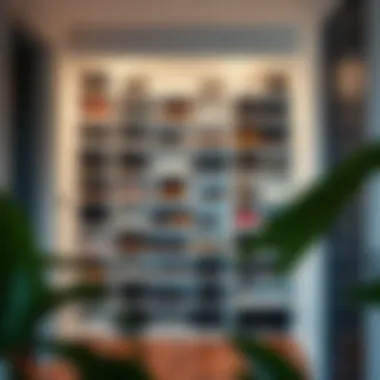
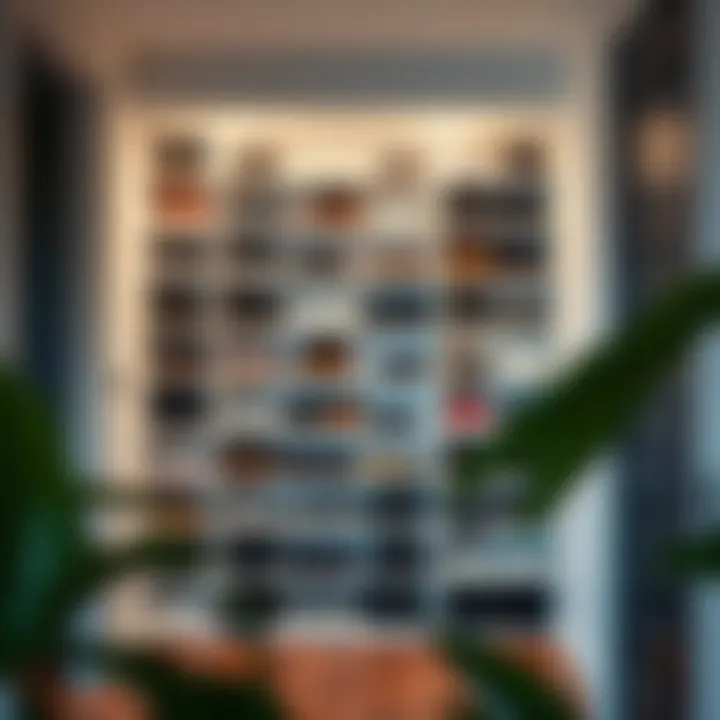
Maintenance and Care
As the saying goes, a stitch in time saves nine, and when it comes to shoe shelving units, this adage could not ring more true. Maintenance and care are paramount for ensuring longevity and functionality of your shelving system. A well-maintained shoe shelf not only safeguards your valuable footwear but also enhances the overall aesthetic of your living space. Proper care practices can stave off deterioration, saving you time and money down the line.
Cleaning Techniques for Different Materials
Different materials call for different cleaning techniques. Whether your shelving unit is crafted from wood, metal, or plastic, knowing how to treat each surface is essential.
- Wooden Shelves: Timber can be sensitive to both moisture and cleaning agents. Using a soft, slightly damp cloth to wipe down wooden surfaces is advisable. For more thorough cleaning, a solution of warm water and mild soap can be effective. Remember to dry the surface immediately to prevent warping.
- Metal Shelves: Keep things simple with metal. A damp cloth combined with a little bit of vinegar can remove dust and grime without causing rust. For tougher stains, a non-abrasive cleaner works wonders—but avoid harsh chemicals that might corrode the surface.
- Plastic Shelves: The beauty of plastic is, it’s durable and easy to maintain. Mild soap mixed with water usually does the trick. Avoid high heat, as it may warp the material, and always dry the shelves after cleaning to keep them in prime condition.
Tip: Regular dusting is crucial! Even a quick swipe can prevent dirt build-up, keeping your shoes looking their best.
Preventing Wear and Tear
While cleaning can mitigate damage, prevention is always better than cure. Adopting strategies to prevent wear and tear can extend the life of your shoe shelving units significantly.
- Weighted Distribution: Avoid overloading your shelves. Confirm that each shelf can hold the weight of your shoes while evenly distributing pairs across. This reduces strain and maintains the integrity of the unit.
- Optimal Placement: Location matters; ensure your shelving is in a dry environment, away from direct sunlight or heat sources that might warp or fade materials.
- Regular Inspections: Just as you check your tire pressure or oil levels, keep an eye on your shoe shelving unit. Look for any signs of instability or damage, addressing issues as they arise.
- Use Liner or Mats: For wooden shelves, utilizing a liner can prevent scratches or dents from heavy shoes. Similarly, using mats on metal shelves can minimize scratches and create a more stable surface for footwear.
Maintaining shoe shelving units isn’t just about keeping them clean; it’s about ensuring they serve their purpose effectively for years to come. By incorporating these maintenance habits, you can enjoy a clutter-free, aesthetically pleasing environment without the worry of wear and tear.
Maximizing Storage Capacity
Creating a well-organized space for shoe storage extends far beyond simply having an attractive shelving unit; it’s about maximizing storage capacity so you can utilize every square inch effectively. This section delves into specific strategies and techniques that elevate your shoe shelving's efficiency. With the right approach, even the most modest of areas can be transformed into a storage haven that meets your needs without sacrificing style or accessibility.
First off, it’s essential to recognize that maximized storage capacity isn't merely about cramming shoes into every available space. Instead, it’s about finding a harmonious balance between organized presentation and easy access. Storing shoes efficiently enhances display while preserving the life of each pair, steering clear of unnecessary wear and tear. Here, we’ll explore stacking techniques and the utilization of vertical space as pivotal components in achieving optimal storage outcomes.
Stacking Techniques
When it comes to to optimizing storage, stacking techniques trap the essence of efficiency. This method involves creatively placing shoes on top of one another while maintaining a visually coherent arrangement. Here are a few insightful strategies to consider:
- Use Stackable Storage Bins: Clear plastic bins that fit within shelving units lend versatility. They protect shoes from harm and make it easier to see what’s stored inside.
- Muted or Contrasting Colors for different styles: Arrange similarly colored shoes together by design or purpose. For instance, pair casual sneakers in soft blues and grays, and reserve bolder hues for dressier heels.
- Interleave Shoes: Alternate the pairs you stack—placing a flat pair beneath a heeled pair—maximizes vertical height while keeping a chic appearance. This allows each shoe to be displayed adequately and prevents damage from too much weight resting on any single pair.
Remember, the key with stacking is to create a balance; visually appealing arrangements naturally draw the eye while also maintaining practicality. Before you embed your technique into your shelving practice, think about accessibility as an utmost priority.
Utilizing Vertical Space
As urban living spaces shrink, our approach to utilizing vertical space becomes ever more crucial. Vertical shelving units harness unused wall space, allowing shoes to be visually displayed without crowding the floor. This opens up various pathways to implement your shoe collection creatively and functionally:
- Wall-Mounted Shelves: Install multi-tiered shelving that permits horizontal shoe placement while freeing up floor area. It can effectively double up as a decorative element showcasing your fashion sense.
- Tall Allow Space for Short Shoes: Choose taller units equipped with adjustable shelves, which are ideal for storing heels without damage. This flexibility ensures that shorter shoes don’t get overshadowed.
- Hooks and Racks: For sandals or slip-ons, consider incorporating hooks or racks to hang them. Shoes become an identifiable part of your décor, enhancing the overall aesthetic of the room.
The beauty of utilizing vertical space not only addresses storage issues but also promotes an open and inviting atmosphere. This solution works well in both home and retail environments, leading to an organized display that encourages exploration.
Trends in Shoe Shelving Design
The world of shoe shelving units is never stagnant; it evolves with the times, reflecting changing tastes and lifestyles. Understanding current design trends is crucial for anyone looking to optimize their shoe storage solution while enhancing the overall aesthetic of a space. In this era, where practicality meets style, choosing a shoe shelving unit isn’t just about utility; it’s about making a statement. Incorporating the right design trends can transform an ordinary space into something sleek and functional.
Both minimalist designs and eclectic combinations are currently making waves in the shoe storage world. Minimalist designs favor clean lines and simplicity, while eclectic combinations embrace a bold mix of styles and textures. Each trend comes with its own set of benefits and considerations, making it essential to explore their distinct characteristics thoroughly.
Minimalist Designs
When it comes to minimalist designs, the focus lies heavily on simplicity and efficiency. Think of those sleek, unobtrusive shelves that seem to disappear into the background, drawing the eye away from clutter and chaos. This simplicity isn’t just for show—it makes it easier to find what you need without sifting through a crowded space.
The benefits of minimalist shelving units are numerous:
- Clarity and Order: A well-organized shoe shelving unit can give the illusion of a tidy space even when there’s chaos elsewhere.
- Ease of Access: With fewer distractions, reaching for a shoe becomes quick and hassle-free.
- Endless Styling Options: Simple designs make it easy to pair with various home aesthetics, from modern to rustic.
Minimalist designs often utilize materials like light wood or metal finishes, which not only contribute to their sleek appearance but also come with added durability. The thoughtful placement of these units around the house often allows them to play a functional role without overwhelming the decor.
Eclectic Combinations
On the other side of the spectrum, eclectic combinations present a more vibrant approach to shoe shelving. This trend is all about blending diverse styles—think of a vintage wooden shelf adorned with modern metal accents. Eclectic designs allow for personal expression and creativity, making every space unique.
Here are some defining qualities:
- Visual Interest: Mixing materials like wood with glass or metal generates a dynamic look that invites exploration.
- Customization: The eclectic approach allows homeowners to curate their shelves with color and texture, showcasing not just shoes but personality as well.
- Conversation Starters: Uniquely designed shelving units often become focal points, prompting discussion and admiration from guests.
In these kinds of setups, keeping balance is key. Too much chaos can lead to a cluttered look, undermining the functionality of the storage unit. It’s about striking the right balance between variety and cohesion, ensuring that every element feels intentional.
"A well-chosen shoe shelving unit is more than just functional; it's an extension of your style and persona."
In sum, the trends in shoe shelving design illustrate that functionality and aesthetics can go hand in hand. Whether opting for clean lines or a mixture of styles, the choice of shelving unit can undeniably impact how one organizes and displays their shoe collection, transforming what might be just storage into a curated visual experience.
The Role of Shoe Shelving in Feng Shui
Shoe shelving units do not merely serve as storage for footwear; they can also play a significant role in the practice of Feng Shui, an ancient Chinese philosophy centered on harmonizing individuals with their surrounding environment. In this context, how one's shoes are organized is more than a matter of aesthetics—it can affect the energy flow within a home and contribute to overall well-being.
Creating Balance and Order
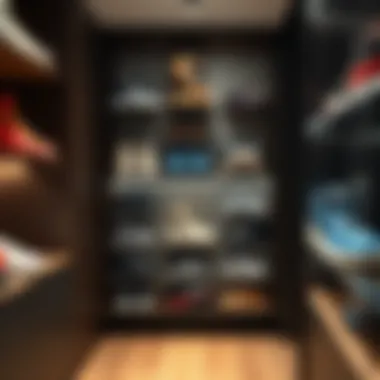
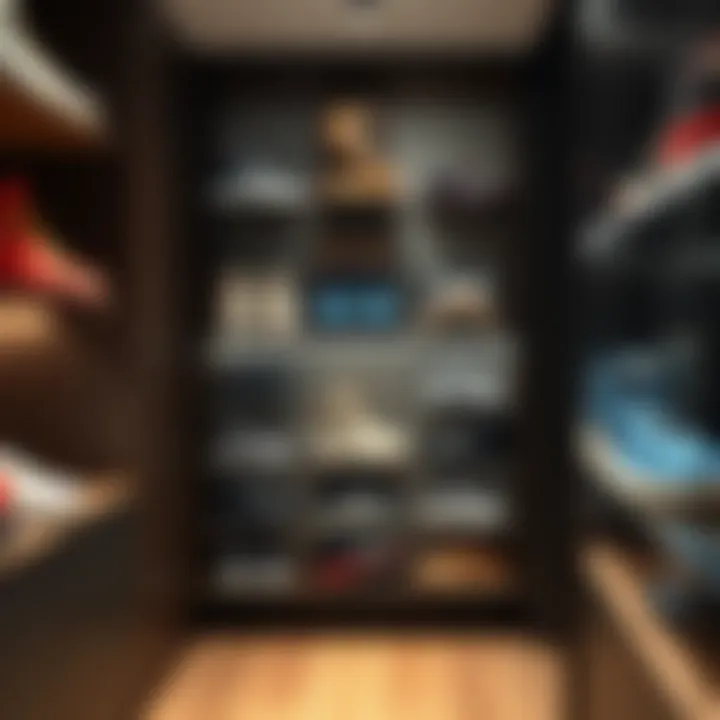
Maintaining balance and order is fundamental in Feng Shui, and this extends to your shoe storage. A cluttered entryway, filled with mismatched pairs of shoes, can result in stagnation of energy, or Chi, hindering the positive flow throughout the home. In contrast, using shoe shelving units can foster a more harmonious environment. A well-organized shoe shelf not only keeps shoes accessible and neat but also nurtures a sense of peace.
To achieve this balance, consider the following points:
- Uniform Arrangement: Arrange shoes in a consistent pattern, for example, by type or size. This organization allows the eye to rest and creates a more tranquil space.
- Accessibility: Ensure that footwear is easily reached, as squeezing or frantically searching through a heap can create a sense of chaos. Try to keep seasonal shoes in prominent view while tucking away off-season pairs.
- Use of Colors: Incorporating color coordination can also work wonders. For instance, placing brighter-colored shoes at eye level can invite positive energy, while dull or dark shades below can help ground the space.
In Feng Shui, a well-ordered shoe shelving unit symbolizes clarity and readiness, encouraging positive energies to flow smoothly within the household.
Enhancing Energy Flow
Aside from maintaining balance, the arrangement of shoes can enhance Chi flow, which is pivotal in Feng Shui. Shoes represent our journey and choices—the path we walk on, literally and metaphorically. Therefore, their placement can impact how energy circulates in your living space. A chaotic setup might not only block traffic but also potentially disconnect you from your life journey.
Here’s how to create a more energetic environment with your shoe shelving:
- Shoe Selection: Keep only those shoes that you wear regularly. Let go of those that no longer serve a purpose or that hold negative memories. This selection process is not just decluttering; it’s creating space for new opportunities.
- Shelving Height: Position your shelving units at an appropriate height. A shelf too high can represent unreachable goals in life, while one that is too low may reflect low self-esteem or missed aspirations. Aim for eye level if possible.
- Integration with Nature: Incorporate plants near or around your shoe shelving unit. Not only do they enhance air quality, but they also symbolize growth and harmony, further improving energy circulation in the area.
“In Feng Shui, every item and every arrangement tells a story that influences the pathway of life itself.”
By creating a shelving unit that resonates with balance and facilitates smooth energy flow, you're not only elevating your shoe storage but also investing in a serene atmosphere that empowers the body and mind.
Shoe Shelving Units in Retail Spaces
Shoe shelving units play a pivotal role in the retail environment, acting as more than just storage; they are a form of visual merchandising that affects how products are displayed and perceived. For retail spaces, effectively showcasing footwear can entice customers, drive sales, and ultimately influence shopping behavior. The design and functionality of shoe shelving can elevate a brand while meeting practical needs, ensuring that every pair of shoes gets its moment in the limelight.
Showcasing Products Effectively
When it comes to retail, presentation matters. The right shoe shelving unit can make a significant difference in how products are displayed. Consider the following:
- Visibility: Open shelving allows customers to see products easily, which can trigger interest. Unlike closed storage, where shoes might gather dust and lose appeal, a well-organized shelving unit invites shoppers to browse.
- Height Variation: Utilizing different shelf heights not only adds visual interest to the display but also allows for the effective showcasing of a variety of shoe types, from sneakers to stilettos.
- Branding Cohesion: The choice of materials and colors in shelving units should align with branding. For example, sleek metal units can convey a modern vibe, while rustic wooden shelves might evoke warmth and approachability.
- Strategic Placement: Units placed in high-traffic areas can capture attention, especially if shoes are arranged by color or style. This setup encourages customers to engage with the offerings, increasing the likelihood of a sale.
"You never get a second chance to make a first impression." This rings especially true in retail, where how shoes are presented can significantly impact a shopper’s experience.
Optimizing Customer Experience
Effective shoe shelving units do more than just display; they enhance the overall shopping experience. Here’s how:
- Ease of Access: Shelves designed for easy reach allow customers to interact with the products without frustration. If a shopper can't easily pull a shoe off a shelf, they might just walk away.
- Organizational Clarity: Grouping similar styles or brands can simplify the shopping journey, making it easier for customers to find what they're looking for. This immersion can shorten the decision-making process and boost customer satisfaction.
- Interactive Elements: Some retailers take it a step further by adding technology—like QR codes or augmented reality elements—to their shelving units. This tech-savvy approach can provide customers with additonal information about the products.
- Comfort and Atmosphere: The layout and presentation contribute to an inviting store environment. Shoppers are more likely to linger in a space that feels organized and welcoming. Thoughtfully designed shelving can be a major aspect of that ambiance.
In sum, shoe shelving units are crucial elements within the sphere of retail. They are not merely functional pieces but strategic tools that help businesses maximize their potential by presenting their products in optimal light. As both stylish works of art and practical solutions, they enable retailers to effectively capture consumer interest while enhancing overall satisfaction.
Shoe Shelving for Specific Needs
The importance of tailored shoe shelving solutions cannot be overstated, especially when considering the unique requirements different types of users may have. A one-size-fits-all approach seldom yields optimal results, and thus, understanding specific needs becomes imperative not just for aesthetic appeal but also for functionality and space management.
Children's Shoe Storage Solutions
When it comes to children's shoe storage, safety and accessibility are top priorities. Kids grow quickly, and their shoe collections often reflect a chaotic mix of sizes, styles, and colors. Thus, having a designated shoe shelving unit that caters to these evolving needs is not merely a convenience; it's a necessity. Here are some features to consider:
- Adjustable Shelves: Adjustable shelves allow parents to modify the height according to the child's growth, ensuring that every shoe can be easily accessed.
- Bright Colors and Themes: Units painted in fun colors or designed with whimsical patterns can encourage children to take interest in their shoes, fostering a sense of responsibility.
- Low Heights: Designing shelving units that are at a child-friendly height makes it easier for young ones to reach their shoes.
Incorporating compartments for seasonal shoes, such as boots or sandals, can also help keep the mess at bay and promote organization.
"A little organization can turn a messy shoe collection into a seamless entryway experience."
Specialized Units for Heeled Shoes
For lovers of fashion, particularly those who appreciate the elegance of heeled shoes, dedicated shelving units are essential for showcasing and preserving these items. Heels, particularly stilettos and platforms, demand more care and specific storage arrangements to maintain their form. Here are some considerations:
- Individual Compartments: Separate compartments provide individual spaces for each pair, preventing scuffs or scratches. This is particularly important for high-end designer pieces.
- Inclined Shelving: An inclined design not only displays the shoes attractively but also allows for better ventilation, reducing dampness and potential deterioration of materials.
- Dust Covers: Consider incorporating covers or boxes to keep dust at bay without hindering visibility.
Culmination
The conclusion serves as a pivotal section in any article, summarizing the essence of the preceding discussions and underscoring the significance of the explored themes. In this exploration of shoe shelving units, the conclusion spins together the threads of functionality, design, and practicality in an accessible manner for every reader.
Summary of Key Points
To encapsulate the knowledge shared:
- Diverse Types: Shoe shelving units range from wall-mounted options to freestanding shelves, each catering to varying needs and preferences.
- Design Relevance: Aesthetic appeal is important; a well-designed shelving unit not only organizes but also enhances the overall decor of the space.
- Material Matters: Chosen materials impact durability and style, with each choice offering distinct advantages.
- Installation Insights: Proper installation ensures that shelves remain both functional and secure, preventing issues down the line.
- Maintenance Tips: Knowing how to care for different materials prolongs the life of the unit and keeps it looking fresh.
- Trends and Future: The evolution of shoe shelving reflects changing consumer desires and aesthetic trends, setting a path for innovations.
Above all, integrating these aspects cultivates not just a storage solution, but also a platform for expression within any space.
The Future of Shoe Shelving Units
Looking ahead, the future of shoe shelving units paints a promising picture. As the way we view spatial organization evolves, we can expect:
- Smart Technology Integration: Shelving units could harness technology, with features like automatic lighting, app connectivity for inventory tracking, or smart locks for security.
- Sustainability Focus: Environmentally friendly materials are becoming the norm. Future shelving designs leverage reclaimed wood and low-impact production methods, aligning trends with eco-consciousness.
- Customized Solutions: Personalization will take center stage. Custom solutions based on individual space considerations and shoe varieties will drive the market, catering to specific needs better than ever.
- Compact and Multifunctional Designs: As living spaces become more compact, shoe shelving units will likely shift towards multifunctionality, serving as seating or decorative pieces while retaining their core purpose.
The investment in shoe shelving units today is clearly intertwined with a vision of enhanced functionality and style for tomorrow. Embracing these advancements while being mindful of aesthetics allows individuals to not only store their shoes but also cultivate a curated environment that resonates with personal taste.
"The best solutions in design pay homage to both form and function, making sure that while shoes are housed neatly, the process is done in style."
By considering the trajectory of shoe shelving units, we can glean insights into how future designs will merge with user needs, responding to ever-changing lifestyles while factoring in aesthetic and environmental elements.

